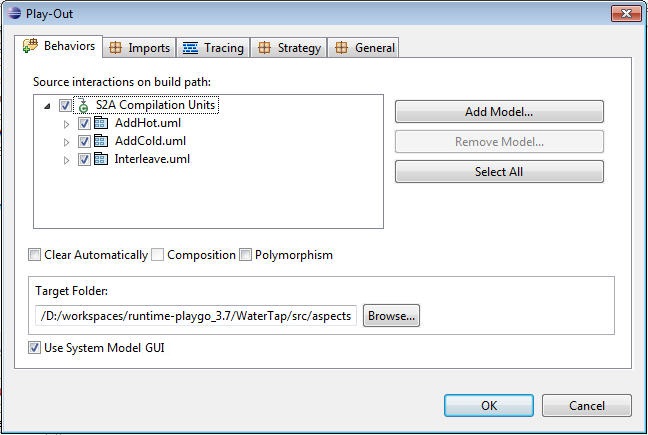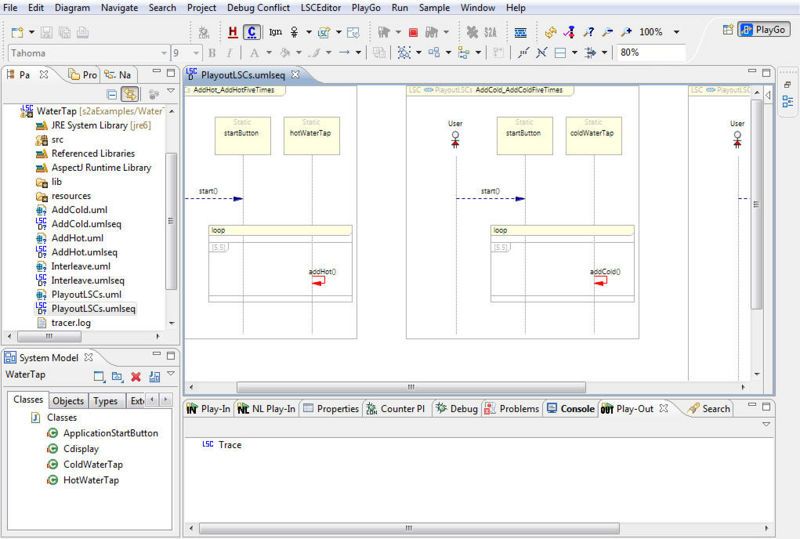Difference between revisions of "Multiple model files"
From WeizmannWiki
(New page: ==Description== Working with multiple model files allows one to define LSCs in separate files (e.g., each file represents a use case), and execute them in a single play-out session. Workin...) |
|||
| Line 12: | Line 12: | ||
<br> | <br> | ||
The newly created file has a pre-defined name 'PlayoutLSCs.uml'. PlayGo uses this file for play-out and debug: | The newly created file has a pre-defined name 'PlayoutLSCs.uml'. PlayGo uses this file for play-out and debug: | ||
| − | [[Image:playout.multipleFiles.jpg]] | + | [[Image:playout.multipleFiles.jpg|800px]] |
Latest revision as of 09:52, 29 November 2012
Description
Working with multiple model files allows one to define LSCs in separate files (e.g., each file represents a use case), and execute them in a single play-out session. Working with multiple files encourages teamwork, where each developer defines a different set of LSCs.
How Does it Work
In the 'Play-Out' properties sheet, add all the LSC files that constitute your application's behavior:

During play-out, the LSC files are read one by one and are merged into a single LSC file. The following logic applies:
- Each LSC is renamed to <originated file name>_<original LSC name> (to avoid multiple LSCs with the same name).
- Classes with the same name are merged into a single class containing all the method and parameters defined in the various LSCs.
The newly created file has a pre-defined name 'PlayoutLSCs.uml'. PlayGo uses this file for play-out and debug:
